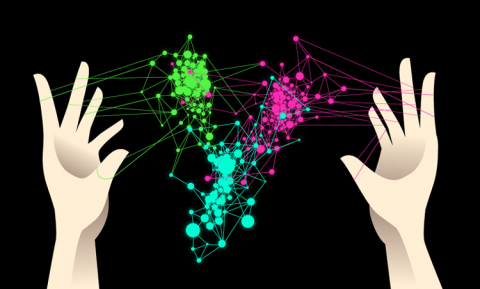The data generated by human and machine participants in a social machine can be highly complex. This project explores how new mathematical techniques known as topological data analysis (TDA) can be put to use in understanding social machines. Over the past decade, TDA has emerged in pioneering research applying algebraic topology to data analysis.
The idea behind TDA is to represent big, complex data sets as a network of nodes and edges, and create an intuitive map based on the similarity of the data points. The more similar data points are, the closer they will be to each other on the map, effectively using distance as an input that is translated into a network or topological shape. The idea is to reduce high-dimensional data sets to lower dimensions without sacrificing their most relevant topological properties.
The approach has already achieved very exciting results in a range of fields, for example, the discovery of a new class of breast cancers, insights into gene structure, and understanding coverage problems in sensor networks. Similarly, we hope that the tools of TDA hold promise to describe the dynamics of social machines in novel and insightful ways.


